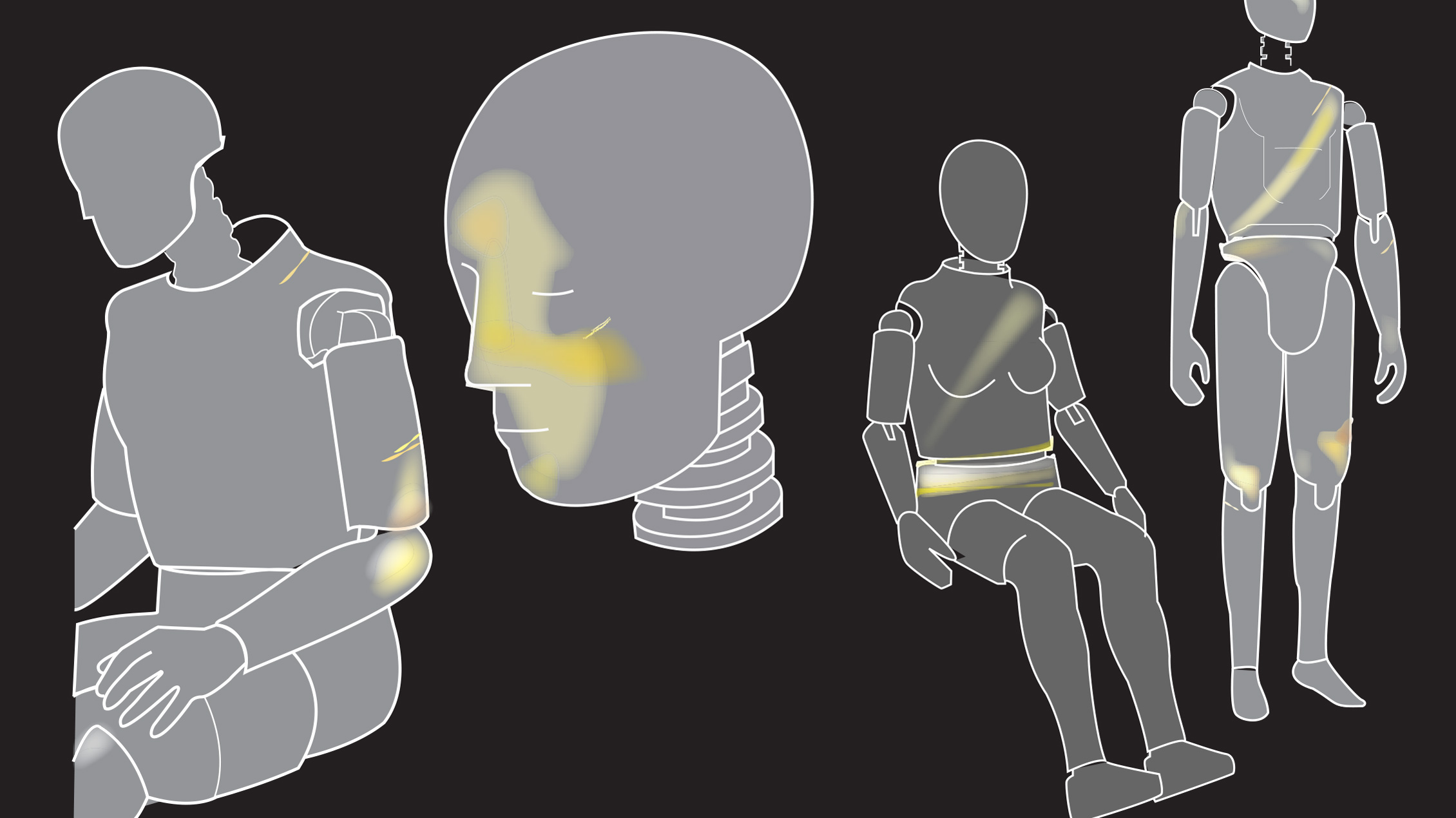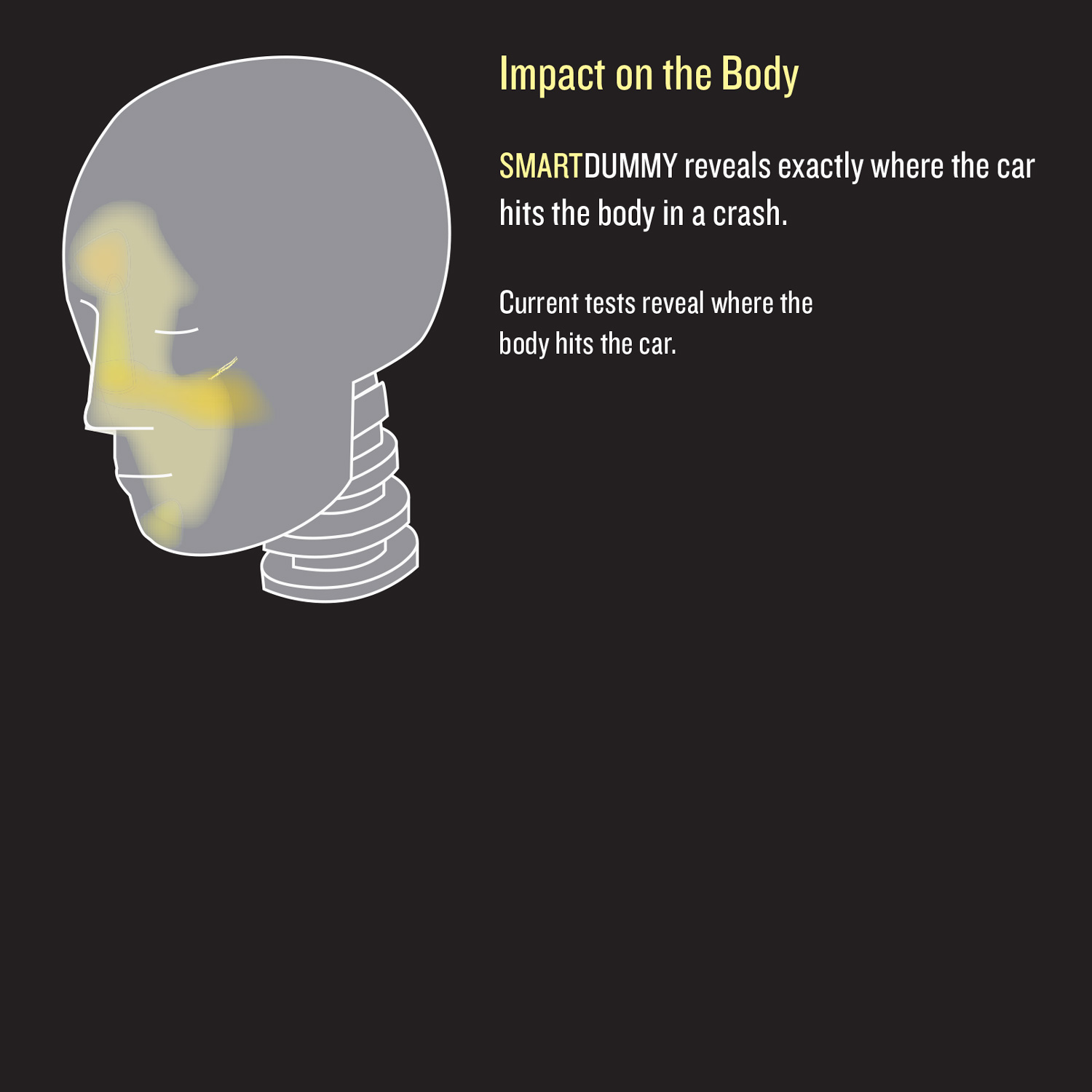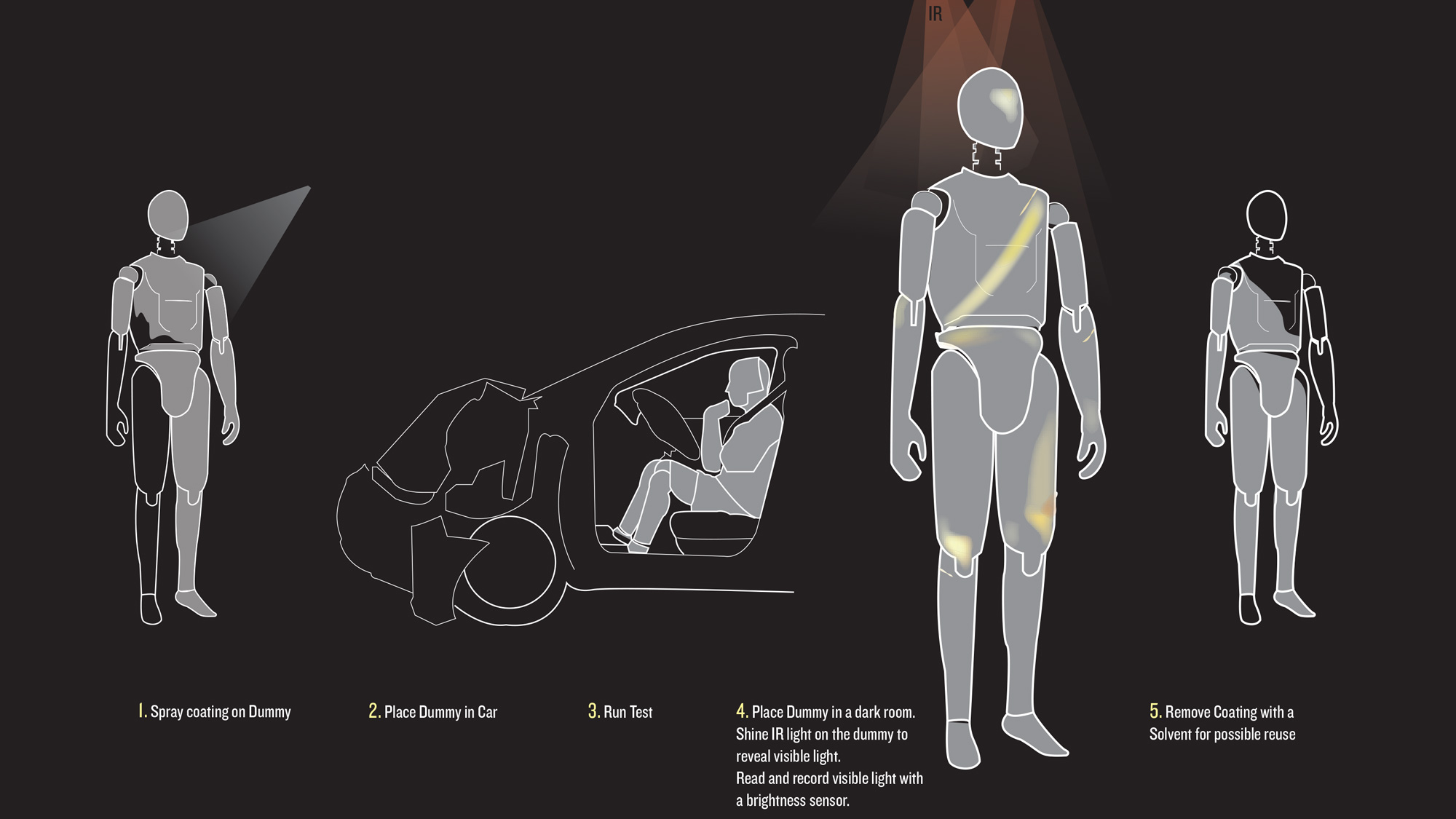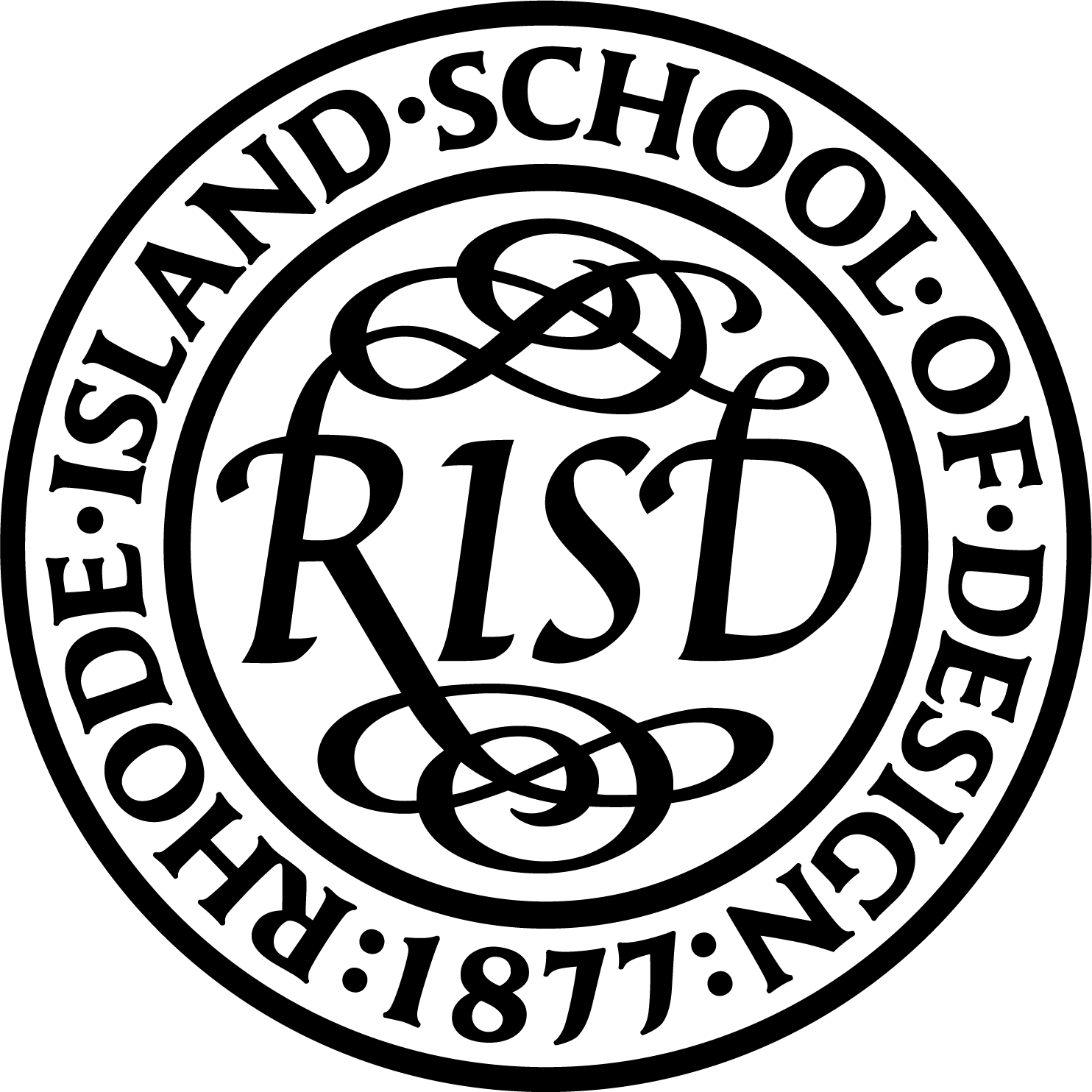
Smart Dummy
Creator: Laila Aukee
Supervisor: Peter Yeadon
Collaborators: David Rejeski, Wilson Center
This materials-driven study considers future applications for mechanoluminescent smart materials that emit light when they are deformed by an external force. In this work, Aukee conceived of a new kind of crash test dummy that would allow testing for injuries in a car accident.
Conventional crash test dummies are coated with a paint that is transferred to vehicle elements (e.g., steering wheel) during a crash. So the paint winds up on elements within the car, and it’s the car that’s inspected, not the dummy.
Conventional crash test dummies are coated with a paint that is transferred to vehicle elements (e.g., steering wheel) during a crash. So the paint winds up on elements within the car, and it’s the car that’s inspected, not the dummy.
But unlike current technologies, Aukee’s Smart Dummy would clearly show how the human body receives impact forces during a crash. The Smart Dummy would be tested as usual, but instead of using a conventional paint, a mechanoluminescent coating would enable light to be emitted from the dummy wherever injury had occurred.
Gradients of light would emerge from dummy as luminous bruises, with the brightest intensities shining from areas of highest impact. A brightness sensor would then be used to measure the range of pressures that the dummy experienced, revealing the exact shape of impact, and displaying specific information about how parts of the car impact the body.
Gradients of light would emerge from dummy as luminous bruises, with the brightest intensities shining from areas of highest impact. A brightness sensor would then be used to measure the range of pressures that the dummy experienced, revealing the exact shape of impact, and displaying specific information about how parts of the car impact the body.




Aukee designed a unique hybrid smart material coating for Smart Dummy that is both mechanochromic and chemichromic. It consists of numerous of microcapsules. Some are filled with glucose, and others are filled with a chemiluminescent dye. During impact, microcapsules burst and the dye emits light as it mixes and reacts with glucose.
By designing the glucose microcapsules to withstand a range of pressures, some break at very low pressure, while many more will burst under higher impact forces. This allows for more glucose to be present in the reaction at a higher force, creating a brighter light to signify greater impact.

This original idea won Aukee a Nanovation Prize.
Previous Next
Back︎︎︎

